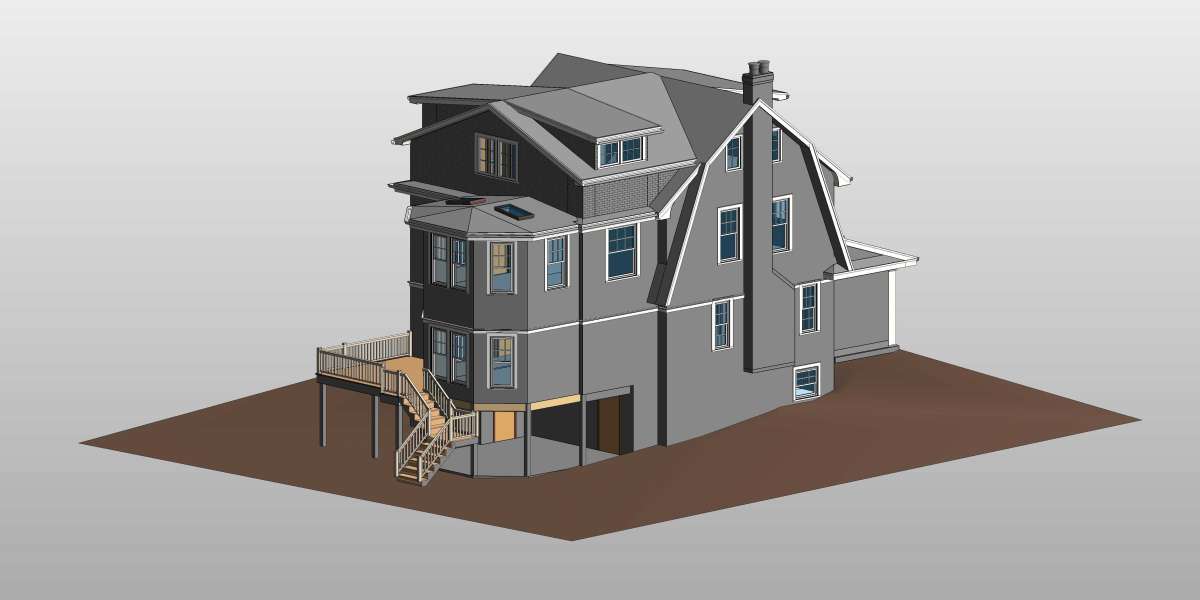Texas construction projects are getting bigger, more complex, and more demanding than ever. From towering skyscrapers in Dallas to sprawling industrial facilities in Houston, the Lone Star State's construction industry faces unique challenges that require innovative solutions. Building Information Modeling (BIM) has emerged as a game-changing technology that's revolutionizing how architects, engineers, and contractors approach design and coordination across Texas.
The construction landscape in Texas is particularly demanding due to the state's rapid growth, diverse climate conditions, and large-scale infrastructure projects. Traditional design methods often fall short when managing the complexity of modern construction projects, leading to costly errors, delays, and coordination issues. BIM solutions address these challenges head-on, offering a comprehensive approach to project management that enhances accuracy, improves collaboration, and streamlines the entire construction process.
This technology isn't just a trend—it's becoming essential for construction professionals who want to stay competitive in Texas's booming market. Whether you're working on residential developments, commercial buildings, or industrial facilities, understanding how BIM can improve your design and coordination processes is crucial for project success.
What is BIM?
Building Information Modeling (BIM) is a digital representation process that combines geometry, spatial relationships, and data about building components into a single, comprehensive model. Unlike traditional 2D drawings, BIM creates intelligent 3D models that contain detailed information about every aspect of a construction project.
The key components of BIM include:
3D Modeling: Creates detailed three-dimensional representations of buildings and infrastructure, allowing stakeholders to visualize the project before construction begins.
Data Integration: Embeds crucial information such as material specifications, cost data, and scheduling details directly into model components.
Collaborative Platform: Enables multiple disciplines to work simultaneously on the same model, ensuring everyone has access to the most current project information.
Lifecycle Management: Supports projects from initial design through construction, operation, and eventual demolition or renovation.
BIM operates on different levels of development (LOD), ranging from basic conceptual models to highly detailed construction-ready designs. This flexibility allows teams to use the appropriate level of detail for their specific project phase while maintaining consistency across all disciplines.
Benefits of BIM in Texas Construction
Improved Design Accuracy
BIM solutions dramatically enhance design accuracy by creating precise digital models that eliminate many common errors found in traditional drafting methods. The software automatically detects conflicts between different building systems, such as when HVAC ducts intersect with structural beams or when plumbing runs conflict with electrical conduits.
This level of accuracy is particularly valuable in Texas, where construction projects often involve complex mechanical systems to handle extreme weather conditions. Air conditioning systems, for example, require careful coordination with structural elements and other utilities. BIM ensures these systems are properly integrated from the design phase, preventing costly field modifications.
The parametric nature of BIM means that when one element changes, related components automatically update throughout the model. This feature eliminates the manual coordination required with traditional drawings and reduces the risk of outdated information causing construction errors.
Enhanced Collaboration
Construction projects in Texas typically involve numerous stakeholders, from architects and engineers to contractors and subcontractors. BIM creates a centralized platform where all parties can access the same up-to-date information, dramatically improving communication and coordination.
Cloud-based BIM platforms allow team members to collaborate in real-time, regardless of their physical location. This capability is especially beneficial for large Texas projects that may involve consultants from different cities or states. Everyone can see changes immediately, comment on specific model elements, and coordinate their work with other disciplines.
The visual nature of BIM models also improves communication with clients and non-technical stakeholders. Instead of trying to interpret complex 2D drawings, clients can walk through virtual representations of their projects, better understanding the design intent and making more informed decisions.
Reduced Errors and Rework
One of the most significant advantages of BIM solutions is the substantial reduction in errors and subsequent rework. Traditional construction projects often experience costly changes during construction when conflicts or errors are discovered in the field. BIM identifies these issues during the design phase when they're much less expensive to resolve.
Clash detection tools automatically identify conflicts between different building systems, allowing design teams to resolve issues before construction begins. This proactive approach can save Texas construction projects significant time and money, as field changes typically cost 10 to 50 times more than design changes.
The accuracy of BIM models also improves quantity takeoffs and cost estimating. Contractors can extract precise material quantities directly from the model, reducing estimating errors and improving bid accuracy. This precision helps control project costs and reduces the risk of budget overruns.
Better Project Visualization
BIM's visualization capabilities transform how construction projects are communicated and understood. Detailed 3D models, virtual reality walkthroughs, and realistic renderings help all stakeholders better understand the project before construction begins.
For Texas construction projects, this visualization is particularly valuable when presenting projects to municipal planning committees or community groups. Complex infrastructure projects or large developments can be difficult to understand from traditional drawings, but BIM visualizations make the scope and impact clear to all audiences.
Construction teams also benefit from better visualization through 4D scheduling, which links the 3D model to the project timeline. This capability allows project managers to visualize construction sequences, identify potential scheduling conflicts, and optimize construction logistics.
Challenges and Solutions in BIM Implementation
Technology Adoption Barriers
Many Texas construction firms face challenges when transitioning from traditional methods to BIM workflows. The learning curve can be steep, and initial software and training costs may seem prohibitive, especially for smaller firms.
Solution: Partnering with experienced BIM service providers like chudsama outsourcing can help firms overcome these barriers. Outsourcing BIM services allows companies to access expert capabilities without the overhead of building internal teams. This approach provides immediate access to advanced BIM tools and experienced professionals while internal teams gradually develop their skills.
Staff Training and Development
Successful BIM implementation requires ongoing training and skill development. Many construction professionals in Texas need to learn new software applications and adapt to collaborative workflows.
Solution: Implementing phased training programs and starting with pilot projects can ease the transition. Many successful firms begin by outsourcing complex BIM work while gradually building internal capabilities. This approach allows teams to learn from experts while maintaining project deadlines.
Data Management and Standardization
BIM projects generate enormous amounts of data that must be properly managed and standardized across project teams. Without proper protocols, data inconsistencies can undermine BIM benefits.
Solution: Establishing clear BIM execution plans and data standards at project initiation helps ensure consistency. Using established industry standards and working with experienced BIM providers ensures proper data management throughout the project lifecycle.
Future of BIM in Texas Construction
The future of BIM solutions Texas looks increasingly promising as new technologies continue to enhance capabilities. Artificial intelligence and machine learning are being integrated into BIM platforms, enabling automatic code checking, optimization suggestions, and predictive analytics.
Virtual and augmented reality technologies are making BIM models even more immersive and useful for design review and construction planning. These tools allow project teams to experience spaces before they're built and identify potential issues that might not be apparent in traditional model views.
Integration with Internet of Things (IoT) sensors and smart building technologies is expanding BIM's role beyond construction into facility management and operations. This evolution creates opportunities for Texas construction firms to provide ongoing value to their clients throughout the building lifecycle.
The increasing adoption of prefabrication and modular construction methods in Texas is also driving BIM adoption. These construction methods require precise digital models to coordinate manufacturing and assembly processes, making BIM essential for successful project delivery.
Maximizing Your Construction Success with BIM
BIM solutions are transforming construction design and coordination across Texas by improving accuracy, enhancing collaboration, reducing errors, and providing better project visualization. As construction projects become increasingly complex and competitive pressures mount, BIM technology offers a clear path to improved project outcomes.
The challenges of BIM implementation are real but manageable with the right approach and partnerships. Working with experienced providers like chudsama outsourcing can help Texas construction firms access BIM benefits immediately while building long-term capabilities.
The construction industry in Texas is evolving rapidly, and BIM adoption is no longer optional for firms that want to remain competitive. Start exploring BIM solutions for your next project and experience firsthand how this technology can improve your design and coordination processes.














